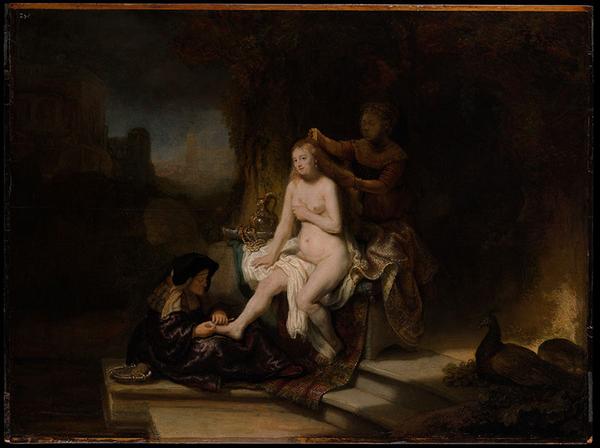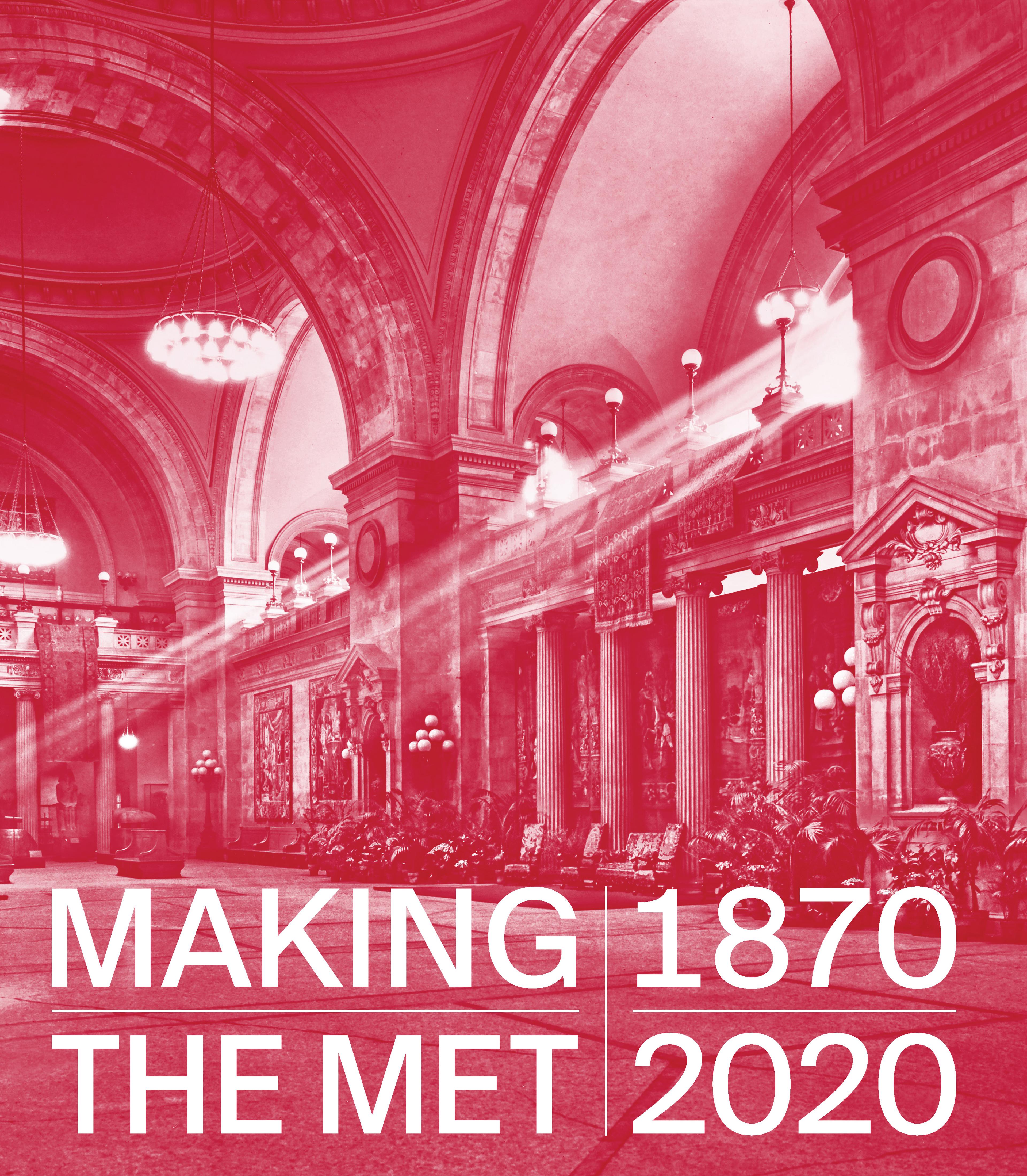The Toilet of Bathsheba
Artwork Details
- Title:The Toilet of Bathsheba
- Artist:Rembrandt (Rembrandt van Rijn) (Dutch, Leiden 1606–1669 Amsterdam)
- Date:1643
- Medium:Oil on wood
- Dimensions:22 1/2 x 30 in. (57.2 x 76.2 cm)
- Classification:Paintings
- Credit Line:Bequest of Benjamin Altman, 1913
- Object Number:14.40.651
- Curatorial Department: European Paintings
Audio

5252. Rembrandt, The Toilet of Bathsheba
NARRATOR: As servants tend to Bathsheba during her bathing ritual, we discover she’s far from alone. Those familiar with her story know that in the tower at the left, someone is hiding, barely visible on the balcony.
ADAM EAKER: She’s actually being observed by King David, who’s fallen in love with her, and will have her husband killed so that he can be with her. This is a picture that positions us also as kind of voyeurs; seeing something that we aren’t really meant to see, something intimate and private.
NARRATOR: A small painting such as this was kept in a special cabinet or room, and was thus known as a cabinet picture. Its owner might have shared it only with a few intimate friends. Though he depicts a Biblical story, Rembrandt engages with the risqué, even erotic, side of the subject matter. At the same time, his trademark naturalism is on view.
ADAM EAKER: He may include fanciful props and backgrounds, but the bodies that he shows seem like real, ordinary bodies.
NARRATOR: Take a look at Bathsheba’s bent left leg, just below her knee.
ADAM EAKER: If you look closely at her calf, you can see the mark of a garter. It shows how closely Rembrandt was observing reality around him, the attention that he paid to real women’s bodies in a way that outraged those critics, who thought that figures from history and myth should look like classical ideal sculptures, not everyday women you might know in your own life.
More Artwork
Research Resources
The Met provides unparalleled resources for research and welcomes an international community of students and scholars. The Met's Open Access API is where creators and researchers can connect to the The Met collection. Open Access data and public domain images are available for unrestricted commercial and noncommercial use without permission or fee.
To request images under copyright and other restrictions, please use this Image Request form.
Feedback
We continue to research and examine historical and cultural context for objects in The Met collection. If you have comments or questions about this object record, please contact us using the form below. The Museum looks forward to receiving your comments.
